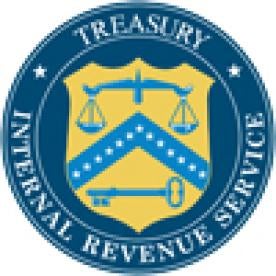Unless you have been living in isolation the last few years, you probably know that the IRS has been issuing major guidance on the safe harbor rules for management contracts over the last three years like it’s their job! Evidently, the IRS does not adhere to the same rules as Fight Club. Be that as it may, the guidance (which we have written about here, here, here, here, and here)[1] has generally been well received although there remain significant questions that have not yet been resolved.
In addition to questions raised by Bob Eidnier in his post a few weeks ago (link above), the recent spate of IRS guidance raises a concern that is the subject of this post. By correlating the permitted length of management contracts with the economic lives of the managed property, some management contracts that are materially modified after August 18, 2017 may not fit within the New Safe Harbors (defined below) even if the term of the modified contract is unchanged from the prior iteration!! (Tax lawyers use exclamation points to try and keep people awake).
Management contracts qualified for the safe harbors to avoid private business use established under Revenue Procedure 97-13 (the “Old Safe Harbors”) based primarily on the term of the contract and the compensation provided for under the contract. With a few notable exceptions, qualifying for the majority of the Old Safe Harbors would occur without regard to the economic lives of the assets financed with tax-exempt bond proceeds! Especially for management contracts for the provision of services in space financed with proceeds of qualified 501(c)(3) bonds, it is very common for parties prohibited from entering into a long-term contract to instead enter into short-term contracts (within the timeframe permitted by the Old Safe Harbors) with evergreen provisions.[2]
The term permitted for a contract to qualify for the safe harbors to avoid private business use as established by Rev. Proc. 2016-44, as modified, amplified, and superseded by Rev. Proc. 2017-13 (the “New Safe Harbor”) cannot be greater than the lesser of 30 years (rarely a problem outside of the P3 context) or 80% of the weighted average reasonably expected economic life of the managed property (as defined in Rev. Proc. 2016-44). Therefore, a management contract that previously qualified for the Old Safe Harbor applicable to 5-year contracts would not, if materially modified subsequent to August 18. 2017, qualify for the New Safe Harbors if the weighted average reasonably expected economic life of the managed property is less than 4-years.
Of course, as is often the case, when the managed property consists primarily of core and shell improvements with a very long economic life, qualifying for the New Safe Harbor will rarely be a concern. However, when the managed property consists primarily of assets with shorter lives (e.g., equipment, etc.), following a material modification, qualifying for the New Safe Harbor could be problematic.
In various informal contexts, the IRS has acknowledged that correlating the term of the management contract with the term permitted under the New Safe Harbor does raise certain concerns. However, to date, I am unaware of the IRS offering any guidance (formal or otherwise) to alleviate some of these concerns. One reason for this could be that this concern has always existed in the context of tax ownership. There has always been a concern that lease agreements entered into in the latter portions of the economic lives of leased bond-financed property could transfer tax ownership to the lessee.[3]
[1] In the interest of full disclosure, the last link has nothing to do with public finance tax law.
[2] Hopefully, the evergreen provisions were written in such a way that they did not constitute “renewal options” as defined in Rev. Proc. 97-13. For purposes of qualifying for the Old Safe Harbors (and the New Safe Harbors for that matter), renewal options are added to the stated term of the contract.
[3] Determining the tax owner of bond-financed property is a significant concern for qualified 501(c)(3) bonds which are subject to the unforgiving requirement that 100% of the property financed with such bonds be owned by a 501(c)(3) organization.



 i
i

